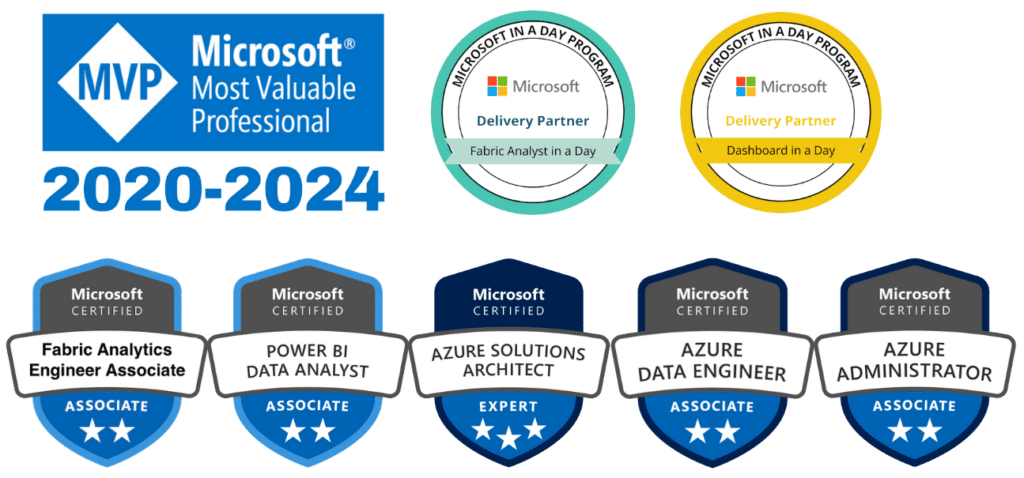Microsoft Power Platform is a group of no-code products that make customised data analytics, business app creation, and automation achievable for non-technical end-users. These products can save time and money by minimising the need for IT specialists and developers, but they can also be adapted by developers to deliver even more complex business solutions.
This article overviews the features and functions of the four products that make up MS Power Platform: Power BI, Power Apps, Power Automate, and Power Virtual Agents. All of these products can be used in conjunction with one another, other Microsoft services, and a wide range of third-party apps.
What is Power BI?
Microsoft Power BI is a self-service business intelligence tool for data analytics and reporting. With the ability to extract, clean, mash up, explore, visualise, and share data, it can transform information from various on-premise and cloud sources into cohesive, interactive reports and visuals.
Power BI is aimed at Excel users who want to gain deeper insights into their data. Similar to Excel, Power BI uses Power Query to import and clean data and Power Pivot to analyse and model data. However, Power BI is set apart by its wealth of connection options and superior visualisation capabilities.
Aided by a simple graphical interface, a Q&A feature that utilises natural language processing, and in-built functions or formulas that can be applied at the click of a button, users with no coding ability can navigate Power BI with ease. Meanwhile, data analysts and those with development skills can supercharge the tool using DAX query language (Data Analysis Expressions) to create complex custom calculations .
As well as producing highly interactive reports, Power BI can be used to create single-screen ‘dashboards’ visualising important business metrics from multiple datasets. These can be set up to update automatically in real-time. Reports and dashboards can be shared on the cloud-based Power BI Service, where collaborators can easily access them from any device.
What is Power Apps?
Power Apps is a self-service application development tool. Designed for use within organisations, it enables the creation of complex, custom business applications capable of streamlining and automating internal processes. The custom apps can run in a browser on desktop or mobile devices.
As a cloud-based, low-code/no-code tool, Power Apps empowers anyone to build and share business apps in a PowerPoint-style environment. Pre-built templates, AI components, and drag-and-drop functionality make the tool accessible to users with no coding capabilities. Its extensibility means that developers can customise apps further through coding.
Data collection and processing can be simplified using Power Apps. With its vast array of connectors, the tool is capable of connecting to external data sources – both cloud and on-premises – as well as storing data internally.
Power Apps integrates seamlessly with Microsoft 365 applications, such as Power BI for analytics, Power Automate to automate workflows and processes, and SharePoint to create custom list forms and allow organisation-wide access and collaboration. External users can also interact with app data and submit information securely via Power Apps portals.
What is Power Automate?
Previously known as Microsoft Flow, Power Automate is a cloud-based workflow and automation engine. It can be used to send notifications, update data, synchronise workflows, and more. By automating repetitive, manual tasks, Power Automate reduces human error, streamlines processes, and saves time.
Featuring pre-built workflow templates, the self-service tool enables users with no coding experience to automate time-consuming, manual tasks. It is also possible to build custom workflows between apps and services, such as approval workflows that simplify management of complex, multi-app processes.
Power Automate can connect with Microsoft applications, such as Outlook and Power Apps, as well as external apps like Gmail, Asana, and Facebook. Workflows can be triggered based on an action; for example, if someone posts a notification, an email will be sent. Workflows can also be triggered by the click of a button or scheduled to take place at specific times.
What is Power Virtual Agents?
Power Virtual Agents can be used to build chatbots to respond to customer and employee questions. It is a no-code tool with a graphical interface, making it easy for non-technical users to adopt.
Power Virtual Agents is typically used by operations staff – from change managers to project managers and shared services support teams – to develop bots, from dialogue creation to deployment. It integrates easily with other products like websites and Microsoft Teams, and can be used in conjunction with Power Automate to trigger workflows in response to user replies.
Integrated with powerful AI and natural language processing, virtual chat agents developed using this tool are capable of understanding user requests and enhancing the user experience.
Together, these four tools comprise the Microsoft Power Platform. They enable the creation of time- and money-saving custom applications without the need for advanced development skills. Integrated with Microsoft 365’s suite of productivity applications, Power Platform provides a single point for managing multiple business processes.
Ready to master MS Power Platform?
As a Microsoft Gold Partner in Data Analytics, Dear Watson Consulting has remained at the leading edge of Microsoft Power applications since the release of Power BI in 2015. We bring extensive firsthand experience to our Microsoft Power Platform consulting and training services. To find out how you can transform your business insights, streamline your workflows, and improve your customer relations using MS Power Platform, contact us today.
